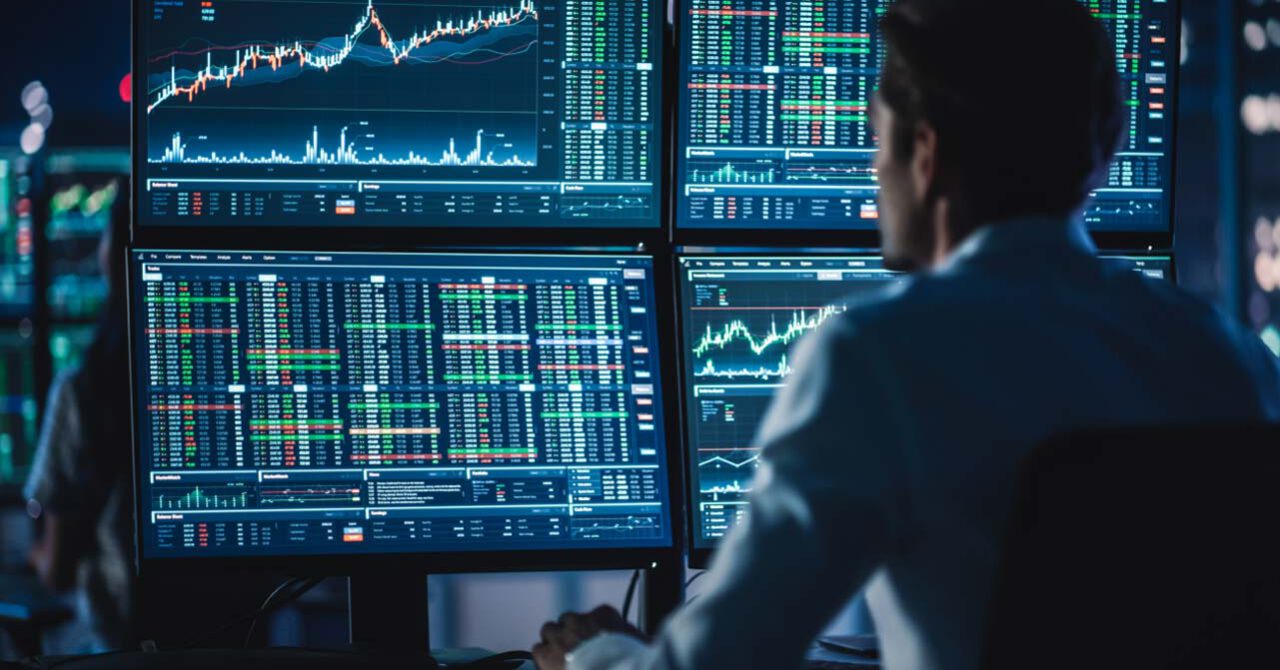Automated computer systems have caused a tipping point in the world of finance, offering a competitive edge to forward-thinking traders. Nowadays, systematic trading strategies play a crucial role in maximising profits and minimising losses through their data-driven approaches, benefiting individual investors, banks, and hedge funds alike. According to Gartner, Inc., by 2025, over 75% of VC and early-stage investment decisions will be informed with the help of AI.
The industry shift is underway because computer-driven methods can streamline complex processes, perform meticulous technical analysis, and establish frameworks to mitigate risks. This guide will take you through the essential systematic trading strategies, explore their benefits, and help you develop a unique approach to navigate the ever-evolving landscape of investing.
Algorithmic Trading: Unveiled
Systematic trading strategies, also known as quantitative or algorithmic trading, execute trades in a highly methodical way, relying on predefined rules and algorithms trained on historical data as well as quantitative analysis. The core elements of systematic trading include strategy development, data collection, and risk management.
Imagine millions of calculations analysing the market according to your set conditions, then proceeding to execute trades automatically. The precision of machines completely eliminates human bias or emotions that could cloud one’s objectivity. This is the opposite of traditional, discretionary trading, where decisions are solely based on human judgement.
Statistical Arbitrage: Profiting from Market Inefficiencies
Statistical arbitrage strategies, or pairs trading, employ computer models to profit from the pricing inefficiencies between sets of related assets. This is considered a market-neutral approach as it involves opening short and long positions simultaneously. For instance, If electrical provider A is undervalued and B is overvalued, one would open a long position on A and a short position on B, aiming to profit from the spread between their prices.
The success or failure of statistical arbitrage depends on how quickly market prices return to the historically established normal, known as mean reversion. This can depend on micro and macro factors, so the correlation between assets is open to fluctuation before their prices re-converge. To keep risks minimal, the majority of statistical arbitrage methods use rigorous algorithms that capitalise on minute pricing inefficiencies lasting mere milliseconds.
NLP in Systematic Trading: Extracting Insights from Textual Data
Natural language processing (NLP) is an AI technology capable of understanding and analysing human language. NLP has become a crucial component in the world of finance due to its efficiency in analysing the latest news, social media sentiments, financial reports, and other relevant textual data.
It can gauge positive and negative sentiments in real time to signal early trends that are likely to impact financial markets. Furthermore, the speed at which NLP models can analyse data is leagues beyond any human capability. This makes it an invaluable tool for traders looking to gain a bird’s-eye view of the latest online news, thereby enhancing their decision-making process.
Big Data and Systematic Trading: An Ideal Combination
Big data refers to the wealth of structured and unstructured information used to analyse customer behaviour, political movements, social trends, and the like. This includes information on transactions, product databases, CRM, video, audio files, and more.
Combined with AI, big data empowers traders to identify and anticipate growing trends that impact stock prices. It represents a cornerstone that enables computer models to extract valuable insights, create more sophisticated computer models, and continually refine trading strategies in real-time.
AI and Machine Learning in Systematic Trading: Encouraging Results
Artificial intelligence (AI) and machine learning (ML) have gained significant media traction by revolutionising numerous industries, including finance. These technologies enable systematic traders to efficiently analyse data, build predictive models, and quickly adapt to shifting market
conditions. While the field of study is still ongoing, a report published by Cerulli Edge Global paints an encouraging picture: the cumulative return of ML-guided hedge fund trading in 2016 to 2019 was almost three times higher as compared to traditionally made investments (33.9% vs. 12.1%).
AI algorithms can be trained to make future predictions on stock movements, but challenges remain. While crafting ML models, significant variables have to be chosen manually so the data does not cover too wide a range. Overfitting algorithms with specific data sets is also disadvantageous. To mitigate this, the ML learning process must be divided into stages of training, data validation, and test sets that keep refining the AI’s performance. As time goes on, the training process is sure to improve and become increasingly efficient due to the exponential nature of AI development.
Risk Management in Systematic Trading: Safeguarding One’s Capital
Automated systems offer efficiency, but the importance of risk management remains crucial to safeguarding one’s capital. Computer algorithms have the ability to react immediately to market conditions, thus aiding in effective risk management. Still, diversification, position sizing, and calculated stop-loss orders are vital points to cover in relation to one’s risk tolerance. After all, algorithms perform according to preset strategies, meaning traders have to be well-versed enough to establish an overall game plan.
Conclusion
AI and machine learning technologies compound into a highly promising tool set for traders. These technological advancements mark a new world of opportunities for those seeking to leverage computer models in their investment journey. Crafting unique strategies relevant to individual goals and risk tolerance is also becoming more feasible than ever. While systematic trading does not completely eliminate risk, well-designed algorithms with sensible safeguards can greatly help mitigate one’s losses. All in all, embracing systematic strategies and staying informed on the latest advancements is sure to benefit those who are curious and willing to learn.




